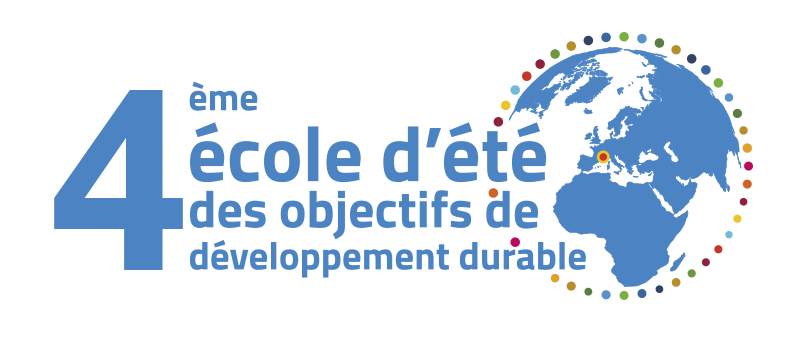
The fourth Sustainable Development Goals (SDGs) Summer School is over! For three days, from 5 to 7 July, the SDG Summer School reaffirmed its ambition to stimulate the creation of interdisciplinary and intercultural projects, true levers of change.
This year, the focus was on SDGs 14 and 15 on marine and terrestrial biodiversity and the One Health approach.
The SDG School: A high-level training course
Initiated in 2016 by Aix-Marseille University, the French Development Agency and the Institute of Research for Development, the Sustainable Development Goals (SDGs) Summer School participates in the training of actors capable of responding to tomorrow's global challenges.
Today, more than ever, environmental challenges are at the centre of the debate. Both the scientific and academic communities have a key role to play in achieving the UN's sustainable development goals and thus initiating a decisive turning point for the future of our planet.
To learn more, visit the SDO 2021 Summer School website.
The 2021 edition of the SDG Summer School
This year again, the International Relations Department (DRI) and the Sustainable Development Department (DDD) of Aix-Marseille University have co-organized the new edition of the SDO Summer School. From July 5 to 7, the participants immersed themselves in a dynamic course that allowed them to develop together multidisciplinary research projects related to the priority themes. Numerous experts and researchers in marine and terrestrial health and biodiversity were present and led the various workshops at the crossroads of SDGs 14 and 15 and the other SDGs. The subject was discussed in particular through its interactions with inequalities and the pandemic, but also with the environment, education and populations.
The fourth edition of the SDG Summer School was :
- Toenrich one's scientific knowledge on the theme of biodiversity
- Create a collective and extend its network,
- Take the measure of the globality of the SDGs: stakes, complexity, responsibilities
- To test and learn collaborative and interdisciplinary researchpractices.
- Develop creativity, experiment, understand and be able to replicate the methods of setting up interdisciplinary projects
- Learn how to work as a team in collective intelligence and produce a common framework for a research project on biodiversity
Relive the school's inaugural lectures
A series of inaugural conferences open to the public was launched prior to the SDG Summer School:
| Conference 1 | Conference 2 | Conference 3 |
|
"A One-Health nexus approach to protecting animals, people and the environment in the context of SDG 15: Life on Land" by Elisabeth P. Ryan, Professor in the School of Veterinary Medicine and Biomedical Sciences at Colorado State University |
“Conservation for the People and by the People: How to involve and empower local communities"by Wanja Nyingi, Head of Ichthyology for the National Museums of Kenya and Coordinator of the Kenya Wetlands Biodiversity Research Group (KENWEB) |
"The Indiscipline of Design: An Approach to Interdisciplinarity from a Design Perspective by Annie Gentes, Professor of design and information and communication sciences at Telecom Paris and head of the Codesign lab & Media Studies, (Telecom Paris) |
| Watch the video of the conference and relive the moment | Watch thevideo of the conference and relive the moment. | Watch the video of theconference and relive this moment. |
The projects selected by the jury
During these three days which gathered about thirty participants from fifteen different countries, 6 projects were presented and 3 were awarded by the jury.
Innovation Award
|
ODD Friendly Award
|
Interdisciplinarity Award
|
|
Research question: |
Research Question: Under what conditions can prickly pear cultivation be sustainable, serving biodiversity in arid and semi-arid areas? |
Research question: |
|
Hypothesis :
|
Hypothesis :
|
Assumptions :
|
Website of the SDG 2021 Summer School
Relive the inaugural lectures of the school:
- "A One-Health nexus approach to protecting animals, people and the environment in the context of SDG 15: Life on Land"
- "Conservation for the People and by the People: How to involve and empower local communities
- "The Indiscipline of Design: An approach to interdisciplinarity from a design perspective"

